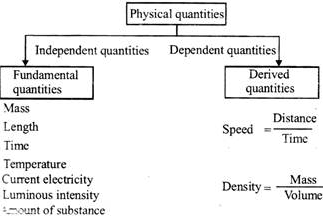Mechanics
-
Electromagnetic Energy: What are some examples of it?
Electromagnetic energy definition Electromagnetic energy is the amount of energy stored in a region of space that we can assign to the presence of an electromagnetic field, and that will be expressed as a function of the forces of the…
-
Fundamental units and Derived Units with Examples
The Main Difference between fundamental Units and Base units is that Units that Express base quantities or fundamental quantities are called Base units or Fundamental Units while Units that describe Derived Quantities are called Derived Units. Units The fixed and…
-
Newton’s First law of Motion Examples in Our Daily Life
Newton’s first law of motion states that ” A body continues its state of rest or of uniform motion in a straight line provided no net force acts on it. Newton’s 1st law of motion deals with the inertial property…
-
Difference Between Micrometer Screw Gauge and Vernier Caliper
The basic difference between screw gauge and vernier caliper is that screw gauge is used to measure only external measurement while vernier caliper is used to measure external as well as internal measurement. The least count of vernier caliper is…
-

Types of Physical Quantities
Physical quantities are those quantities that can be measured. Basically, there are two types of physical quantities (Base quantities or fundamental quantities) and (Derived quantities). These are quantities that are used to describe the laws of physics. Physical quantities may…
-
Types of Simple machines with examples and Applications
Simple machines are devices that allow changing the intensity or the direction of the energy reaching their point of entry in the form of mechanical work, and whose components are all rigid solids. Different types of simple machines are Levers,…
-
What is The International System of Units?
In 1960, an international committee agreed on a set of definitions and standards to describe the physical quantities. The system that was established is called the international system of units (SI). The SI system is formed from three types of…
-
Difference between young’s modulus, bulk modulus and shear modulus
The basic difference between young’s modulus, bulk modulus, and shear modulus is that Young’s modulus is the ratio of tensile stress to tensile strain, the bulk modulus is the ratio of volumetric stress to volumetric strain and shear modulus is…
-
difference between centre of mass and centre of gravity in tabular form
The basic difference between centre of mass and centre of gravity is that Center of mass is a point in a body where net force causes the body to move without rotation, while the center of gravity is the point…
-
States of Matter and their properties for kids
The matter is everything that occupies space and has a size and mass that can be measured. Solids, liquids, gas, and Plasma are the 4 natural states of matter. This post includes: Definition of matter States of matter Properties of…